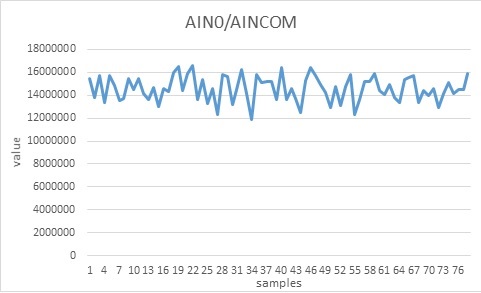Tool/software: Code Composer Studio
Hi everyone,
I have question about ads124s06 controlled. I can command and r/w ads124s06 register. However, it can't work when I command it to start convert.
The code and connect pin are at the last.
Its DRDY pin doesn't fall at default setting. After I enable the PGA gain setting 1, I received 7FFFFFh at AIN2/AINCOM (about 2.65 volt) or 800000h at AIN0/AIN1 (about 0.02 volt). It is the max/minimum number for the ADC. It is strange.
Could anyone help me to fix this problem?
Thanks.
CONNECT PIN
| PIN | function | connect |
| 1 | AINCOM | 0 |
| 2 | AIN5 | 2.12 |
| 3 | AIN4 | 2.63 |
| 4 | AIN3 | 2.05 |
| 5 | AIN2 | 2.65 |
| 6 | AIN1 | 2.23 |
| 7 | AIN0 | 2.21 |
| 8 | START | pin11 |
| 9 | CS | pin53 |
| 10 | DIN | pin51 |
| 11 | SCLK | pin52 |
| 12 | DOUT | pin50 |
| 13 | DRDY | pin12 |
| 14 | DGND | 0V |
| 15 | IOVDD | 5V |
| 16 | DVDD | 3.3V |
| 17 | CLK | 0 |
| 18 | RESET | pin13 |
| 19 | GPIO3 | NA |
| 20 | GPIO2 | NA |
| 21 | GPIO1 | NA |
| 22 | GPIO0 | NA |
| 23 | REFOUT | 1uF to AVSS |
| 24 | REFCOM | 0 |
| 25 | NC | NA |
| 26 | AVDD | 5 |
| 27 | AVSS | 0 |
| 28 | AVSS-SW | 0 |
| 29 | REFN0 | 2.5 |
| 30 | REFP0 | 0 |
| 31 | REFN1 | 2.5 |
| 32 | REFP1 | 0 |
Arduino CODE


